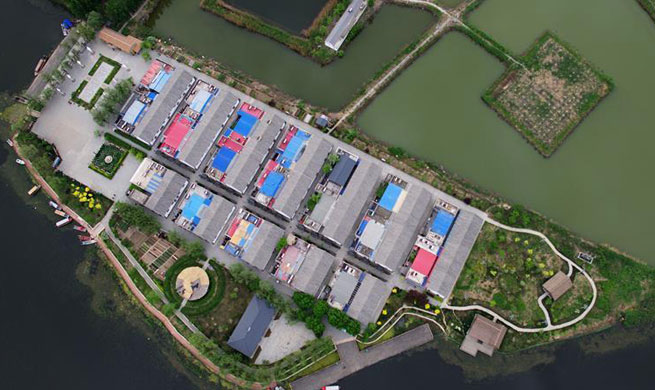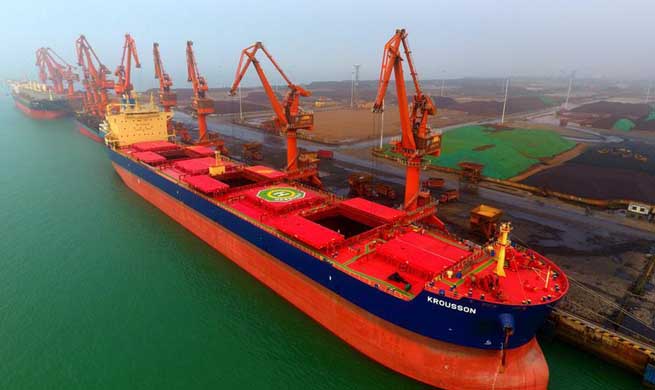TOKYO, April 28 (Xinhua) -- A Japanese Maritime Self-Defense Force destroyer arrived at the Sasebo base in Nagasaki, southwestern Japan, on Friday, where it will likely become part of an new amphibious unit to be stationed there next year.
The helicopter-carrying destroyer called Ise is replacing the retired destroyer Kurama at the Sasebo base.
The Ise, which is capable of handling the take-offs and landing of up to three helicopters simultaneously. Its flattop desk is 197 meters long and 33 meters wide and it is capable of carrying the controversial V-22 Osprey tilt-rotor aircraft.
These "offensive" weapons are in contravention of Japan's pacifist Constitution, a key clause of which reads that "land, sea, and air forces, as well as other war potential, will never be maintained."
At a ceremony held on Friday, the skipper of the Ise vowed to work hard to ensure the ship would serve at the core of maritime missions.
In March, Japan's Ground Self-Defense Force (GSDF) launched a new training unit at a camp in Nagasaki Prefecture.
The amphibious brigade to be launched at the end of the next fiscal year, will use AAV-7 vehicles that can transport personnel and equipment on water and deploy them on land, where it can be used as a regular vehicle, GSDF officials have said.
Preparations for this new unit at the GSDF's Camp Ainoura in Sasebo, Nagasaki, have been in place since 2015.
Japan's defense ministry had been seeking 74.6 billion yen (760 million U.S. dollars) in government spending to bolster forces on some of Japan's southern islands, with funds from here also being allocated to set up the new amphibious unit in Nagasaki.
The Ise is thought to be central to the amphibious unit's operations.
The GSDF has been eyeing deploying the plane which can take off and land like a helicopter, yet fly like a fixed wing plane, at Saga airport in Saga Prefecture from 2019.
The transport aircraft has a globally checkered safety record and was widely criticized after a crash in waters off Nago, near the U.S. Marine Corps' Camp Schwab, in Okinawa, Japan's southernmost prefecture on Dec. 13.
The Ise destroyer when called into action, will also serve as a central command hub for Japan's broader Self-Defense Forces, informed sources have said.
The Maritime Self-Defense Force's Izumo, meanwhile, is the largest warship Japan has entered into service since WWII, and is clearly a de facto aircraft carrier, according to military analysts.
The Ise is a smaller class of the Izumi, the latter of which is 248-meters in length and weighs 19,500 tons.
It is able to accommodate 14 helicopters and is also believed to be able to launch the controversial Osprey, as well as F-35B fighter jets, from its lengthy flight deck.















